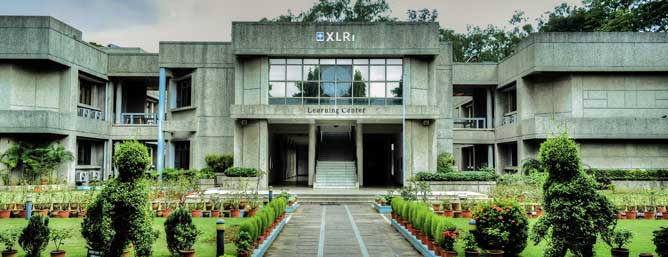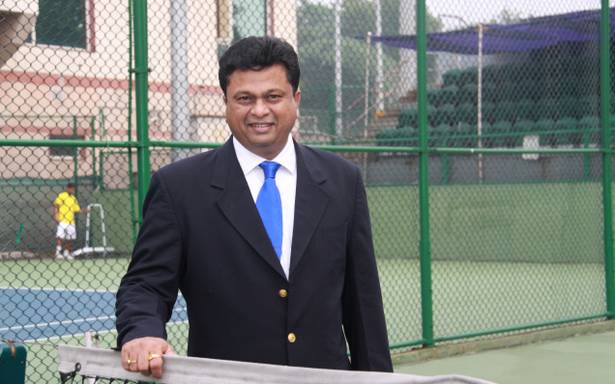Begin typing your search above and press return to search.
Featured
Scoring big with Analytics: Performance Analysis finds growing relevance in Indian sports

"How can you not be romantic about baseball?" says a young Brad Pitt in the much acclaimed Hollywood movie Moneyball. While dealing predominantly with American Baseball and the struggles behind building a competitive team from scratch, the sentiment is universal. How can you not be romantic about sports? All sports. It is impossible to overlook the impact that a win by a team or an individual can have on all the supporters who have ardently backed them so far. The passion displayed on a field of play does not belong to an athlete or a team alone. They carry with them the resonating chants of a billion people backing them up. So for a sport to become a spectator sport in the first place, it is important that it becomes fit for consumption by the audience. For a sport to grow and develop and stay relevant, the role of the "twelfth man" or the fans is something that cannot be discounted in the entire ecosystem. Among other things that Moneyball- both the book and the film- achieved was introducing a mass audience to the role data and analytics can play in the fast moving and ever changing world of sports. Because this sphere is something which constantly encourages a participant to push limits- set higher targets and achieve them. A good timing for a 100mt race a couple of decades back is surely not a timing that will win you a medal in 2018. So how does one measure this consistency? And how does one use it to constantly get better? How do you hold attention enough to emerge a hero for those who look up to you? These are the questions that sports analysts in the world strive to answer every day through their study of data and performances. This fast growing field has gone beyond just charting performances of athletes. The range now includes, "revolutionizing how athletes train, coaches teach, scouts evaluate talent and fans enjoy sports”  Coming to the growing relevance of sports analytics in India, naturally the first game which was targetted was cricket. Given its wider than average reach and relevance among the populace, one commendable thing about the sport is that it has managed to captivate its audience for this long after it first dethroned Hockey as the biggest sport for Indians. While consistent performances and all-year matches have certainly helped in that aspect, let's look at the role a firm called Sports Mechanics played in helping cricket keep up with the times. This Chennai based company, often dubbed the pioneer in the discipline, has as its founder and CEO S Ramakrishnan, the Indian Cricket team’s first sports analyst. He and his firm have been credited with first introducing video analysis to Indian cricket. Ramakrishnan, or Ramky, as he is fondly known across circles, was a keynote speaker at MathSport Asia. Today, Sports Mechanics have widened their reach to advising IPL teams like the Kolkata Knight Riders on their auctions and have even moved beyond cricket. One of its most notable contributions to Indian Olympic sports has been working with badminton star Saina Nehwal to provide her with opponent analysis. The company’s real-time decision-making system proves to be helpful for a coach to survey all the possible options that are feasible during a game.
Coming to the growing relevance of sports analytics in India, naturally the first game which was targetted was cricket. Given its wider than average reach and relevance among the populace, one commendable thing about the sport is that it has managed to captivate its audience for this long after it first dethroned Hockey as the biggest sport for Indians. While consistent performances and all-year matches have certainly helped in that aspect, let's look at the role a firm called Sports Mechanics played in helping cricket keep up with the times. This Chennai based company, often dubbed the pioneer in the discipline, has as its founder and CEO S Ramakrishnan, the Indian Cricket team’s first sports analyst. He and his firm have been credited with first introducing video analysis to Indian cricket. Ramakrishnan, or Ramky, as he is fondly known across circles, was a keynote speaker at MathSport Asia. Today, Sports Mechanics have widened their reach to advising IPL teams like the Kolkata Knight Riders on their auctions and have even moved beyond cricket. One of its most notable contributions to Indian Olympic sports has been working with badminton star Saina Nehwal to provide her with opponent analysis. The company’s real-time decision-making system proves to be helpful for a coach to survey all the possible options that are feasible during a game.  S Ramakrishnan, CEO, Sports Mechanics "If you look at National Sports Federations or private franchises, each of them now have video analysts and High Performance Directors," continues Professor Damodaran. "International athletes who come to play in India are used to a certain dependance on analytics when it comes to fixing on future strategies. Unless India keeps up, the exposure our athletes get will be significantly less." However, the country wasn't always as open to accepting the idea of data driving performance as it is now. Anybody who has followed the contribution of Tata to grassroot level sports cannot deny the vital role it has played in its development especially in the city of Jamshedpur. But as Professor Damodaran recalls, till a couple of years back analytics was an alien subject in the city which otherwise has well-established and structuralised Academies for sports like Football, Hockey and Archery. Today, Jamshedpur can boast of a High Performance Centre under whose aegis the entire sports development program of Tata Steel falls. Not only are athletes closely monitored but the coaches are also mentored in the right direction while keeping in mind the international standard for competitions in their respective sports. "Only when you know what you are competing against can you prepare correctly," Professor Damodaran says. "Statistical predictors are in no way a sure shot way to success, but they help in eliminating doubt," says S Ramkrishnan However, the rest of India is yet to catch up on this particular field despite its growing acknowledgement and relevance. For all its rise and growth, the subject still has limited scope of study in India itself. "The approach that most Indian Federations like to follow is bringing in a foreigner for the job here," says Deepak Dhayanithy, a professor at IIM Kozhikode and also the curator of the one of the few sports analytics courses you might find in a top Indian academic institute. "A better approach would be to send an interested Indian abroad for a specified time period, gain some knowledge, come back and work for a national team."
S Ramakrishnan, CEO, Sports Mechanics "If you look at National Sports Federations or private franchises, each of them now have video analysts and High Performance Directors," continues Professor Damodaran. "International athletes who come to play in India are used to a certain dependance on analytics when it comes to fixing on future strategies. Unless India keeps up, the exposure our athletes get will be significantly less." However, the country wasn't always as open to accepting the idea of data driving performance as it is now. Anybody who has followed the contribution of Tata to grassroot level sports cannot deny the vital role it has played in its development especially in the city of Jamshedpur. But as Professor Damodaran recalls, till a couple of years back analytics was an alien subject in the city which otherwise has well-established and structuralised Academies for sports like Football, Hockey and Archery. Today, Jamshedpur can boast of a High Performance Centre under whose aegis the entire sports development program of Tata Steel falls. Not only are athletes closely monitored but the coaches are also mentored in the right direction while keeping in mind the international standard for competitions in their respective sports. "Only when you know what you are competing against can you prepare correctly," Professor Damodaran says. "Statistical predictors are in no way a sure shot way to success, but they help in eliminating doubt," says S Ramkrishnan However, the rest of India is yet to catch up on this particular field despite its growing acknowledgement and relevance. For all its rise and growth, the subject still has limited scope of study in India itself. "The approach that most Indian Federations like to follow is bringing in a foreigner for the job here," says Deepak Dhayanithy, a professor at IIM Kozhikode and also the curator of the one of the few sports analytics courses you might find in a top Indian academic institute. "A better approach would be to send an interested Indian abroad for a specified time period, gain some knowledge, come back and work for a national team."
The scope of Data Analytics
"Little things make all the difference," says Professor Uday Damodaran to The Bridge on the sidelines of MathSport Asia- a first of its kind international conference anywhere in the continent currently being held at XLRI, Jamshedpur. "For example, football league games earlier awarded 2 points for a win, 1 for a draw and 0 for a loss. There was no competition." "All an analyst suggested that instead of 2, 3 points should be awarded for a win. Suddenly, the stakes were higher, the passion of fans increased. Viewership numbers soared." While MathSport International has been around for nearly a decade- holding conferences biennially in and around Europe, its introduction in Asia had been nothing but a far-fetched dream up until now. The entire event being hosted in one of the premier institutes of the country in the city of Jamshedpur is a testament to the fact that attitudes surrounding international competition are fast changing and developing even in places that may have been adverse to it initially. Coming to the growing relevance of sports analytics in India, naturally the first game which was targetted was cricket. Given its wider than average reach and relevance among the populace, one commendable thing about the sport is that it has managed to captivate its audience for this long after it first dethroned Hockey as the biggest sport for Indians. While consistent performances and all-year matches have certainly helped in that aspect, let's look at the role a firm called Sports Mechanics played in helping cricket keep up with the times. This Chennai based company, often dubbed the pioneer in the discipline, has as its founder and CEO S Ramakrishnan, the Indian Cricket team’s first sports analyst. He and his firm have been credited with first introducing video analysis to Indian cricket. Ramakrishnan, or Ramky, as he is fondly known across circles, was a keynote speaker at MathSport Asia. Today, Sports Mechanics have widened their reach to advising IPL teams like the Kolkata Knight Riders on their auctions and have even moved beyond cricket. One of its most notable contributions to Indian Olympic sports has been working with badminton star Saina Nehwal to provide her with opponent analysis. The company’s real-time decision-making system proves to be helpful for a coach to survey all the possible options that are feasible during a game.
Coming to the growing relevance of sports analytics in India, naturally the first game which was targetted was cricket. Given its wider than average reach and relevance among the populace, one commendable thing about the sport is that it has managed to captivate its audience for this long after it first dethroned Hockey as the biggest sport for Indians. While consistent performances and all-year matches have certainly helped in that aspect, let's look at the role a firm called Sports Mechanics played in helping cricket keep up with the times. This Chennai based company, often dubbed the pioneer in the discipline, has as its founder and CEO S Ramakrishnan, the Indian Cricket team’s first sports analyst. He and his firm have been credited with first introducing video analysis to Indian cricket. Ramakrishnan, or Ramky, as he is fondly known across circles, was a keynote speaker at MathSport Asia. Today, Sports Mechanics have widened their reach to advising IPL teams like the Kolkata Knight Riders on their auctions and have even moved beyond cricket. One of its most notable contributions to Indian Olympic sports has been working with badminton star Saina Nehwal to provide her with opponent analysis. The company’s real-time decision-making system proves to be helpful for a coach to survey all the possible options that are feasible during a game.  S Ramakrishnan, CEO, Sports Mechanics "If you look at National Sports Federations or private franchises, each of them now have video analysts and High Performance Directors," continues Professor Damodaran. "International athletes who come to play in India are used to a certain dependance on analytics when it comes to fixing on future strategies. Unless India keeps up, the exposure our athletes get will be significantly less." However, the country wasn't always as open to accepting the idea of data driving performance as it is now. Anybody who has followed the contribution of Tata to grassroot level sports cannot deny the vital role it has played in its development especially in the city of Jamshedpur. But as Professor Damodaran recalls, till a couple of years back analytics was an alien subject in the city which otherwise has well-established and structuralised Academies for sports like Football, Hockey and Archery. Today, Jamshedpur can boast of a High Performance Centre under whose aegis the entire sports development program of Tata Steel falls. Not only are athletes closely monitored but the coaches are also mentored in the right direction while keeping in mind the international standard for competitions in their respective sports. "Only when you know what you are competing against can you prepare correctly," Professor Damodaran says. "Statistical predictors are in no way a sure shot way to success, but they help in eliminating doubt," says S Ramkrishnan However, the rest of India is yet to catch up on this particular field despite its growing acknowledgement and relevance. For all its rise and growth, the subject still has limited scope of study in India itself. "The approach that most Indian Federations like to follow is bringing in a foreigner for the job here," says Deepak Dhayanithy, a professor at IIM Kozhikode and also the curator of the one of the few sports analytics courses you might find in a top Indian academic institute. "A better approach would be to send an interested Indian abroad for a specified time period, gain some knowledge, come back and work for a national team."
S Ramakrishnan, CEO, Sports Mechanics "If you look at National Sports Federations or private franchises, each of them now have video analysts and High Performance Directors," continues Professor Damodaran. "International athletes who come to play in India are used to a certain dependance on analytics when it comes to fixing on future strategies. Unless India keeps up, the exposure our athletes get will be significantly less." However, the country wasn't always as open to accepting the idea of data driving performance as it is now. Anybody who has followed the contribution of Tata to grassroot level sports cannot deny the vital role it has played in its development especially in the city of Jamshedpur. But as Professor Damodaran recalls, till a couple of years back analytics was an alien subject in the city which otherwise has well-established and structuralised Academies for sports like Football, Hockey and Archery. Today, Jamshedpur can boast of a High Performance Centre under whose aegis the entire sports development program of Tata Steel falls. Not only are athletes closely monitored but the coaches are also mentored in the right direction while keeping in mind the international standard for competitions in their respective sports. "Only when you know what you are competing against can you prepare correctly," Professor Damodaran says. "Statistical predictors are in no way a sure shot way to success, but they help in eliminating doubt," says S Ramkrishnan However, the rest of India is yet to catch up on this particular field despite its growing acknowledgement and relevance. For all its rise and growth, the subject still has limited scope of study in India itself. "The approach that most Indian Federations like to follow is bringing in a foreigner for the job here," says Deepak Dhayanithy, a professor at IIM Kozhikode and also the curator of the one of the few sports analytics courses you might find in a top Indian academic institute. "A better approach would be to send an interested Indian abroad for a specified time period, gain some knowledge, come back and work for a national team." So, what is the future of sports analytics and the role it plays in the Indian context?
"If you look at the development that sports like Shooting have displayed over the last decade or so, the role data has played in improving individual performances has been enourmous," Professor Dhayanithy continues. "While on the one hand if you have institutes like the Abhinav Bindra Targeting Performance coming up- which employs a more singular approach to athlete development, you have academies run by former Olympians like Gagan Narang and Anjali Bhagwat that employ modern techniques to indentify and fine-tune skill among students from a young age," he adds. "For a sportsperson who has traveled the world and seen the endless possibilities of working with proper performance analysis, introducing similar systems back in their own country is indeed something commendable," he signs off.Next Story

